Product News - Automotive EV
PREMO Integrated Power Magnetics Solutions
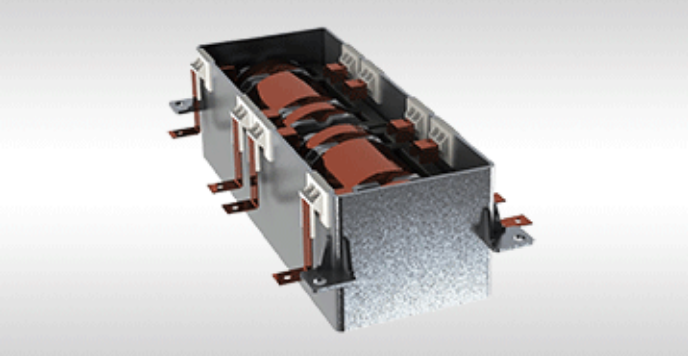
PREMO Integrated Power Magnetics Solutions
The integrated power magnetics technology maximizes power handling in hybrid vehicles (HEV) and full electrical vehicles (EV). Premo announces an AECQ200-qualified family of power magnetics solutions optimized for an on-board charger (OBC).
Sector: Power Electronics, Powertrain, EV/ HEV
Authors: E. Navarro/Abelkader Birch.
Barcelona/Grenoble October 2018
Accordingly, PREMO introduces a kit of 2 transformers with integrated and split resonant chokes aimed at 22kW on-board chargers. These solutions are optimized in terms of power density, efficiency and performance. With a footprint of just 213mm x 73mm and a height of 67mm, the power density of this magnetic component kit is 19.5kW/dm3. Its thermal transfer is maximized by heat conductive aluminum casting.
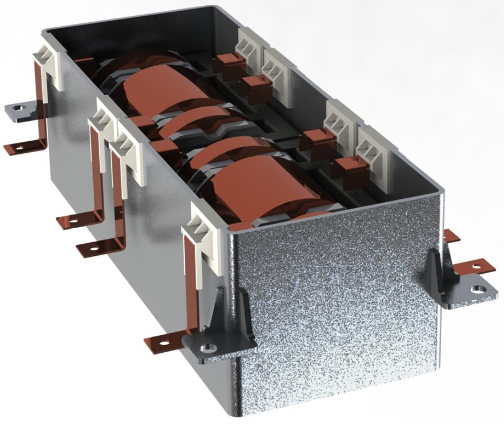
The most common electronic architectures for on-board charger converters with a power range of 1,8kW to more than 22kW are resonant converters like LLC topologies. The LLC topology converter includes a resonant cell (resonant capacitor + resonant choke) and a power transformer. Figure 1 shows a PREMO kit box that includes all the magnetics components needed to operate the 2 stages of a 22 kW OBC:
– 2 x (½ resonant choke + 11kW transformer + ½ resonant choke) = 22kW
This kit box includes optimized molded integrated magnetics that can be implemented directly in the converter of our customers developing 22kW OBCs.
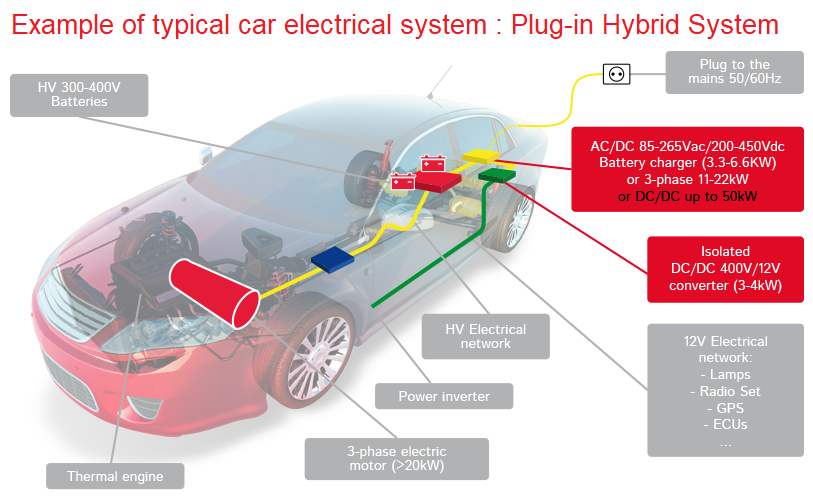
Typically, the electrical system of EV/PHEV involves 3 types of converters:
– On-Board Charger: mains à HV battery
– DC/DC converter: HV battery à LV 12V battery / 12V network
– traction converter: HV battery à engine
The most common electronic topologies for these converters include:
– On-Board Charger – LLC topology
– the DC/DC converter – ZVS topology
– the traction converter – power inverter
DC/DC converter: ZVS topology
DC/DC converters in automotive typically deliver 12VDC to supply the 12V network. The ZVS topology (Zero Voltage Switching) is required to reduce, losses, heating and reliability issues in these converters.
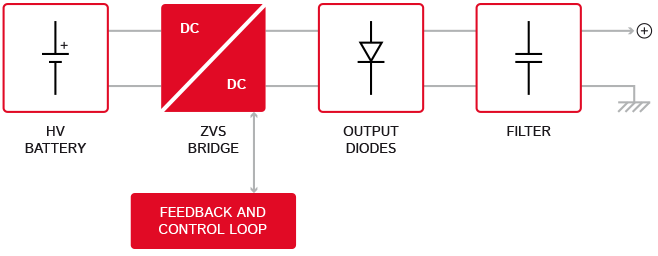
ZVS topology is more suitable for a DC-DC application (400V to 12V) because the output voltage must be adjusted only slightly in the range 10.5V to 15.5V. This enables the global effective turn ratio not to fluctuate significantly.
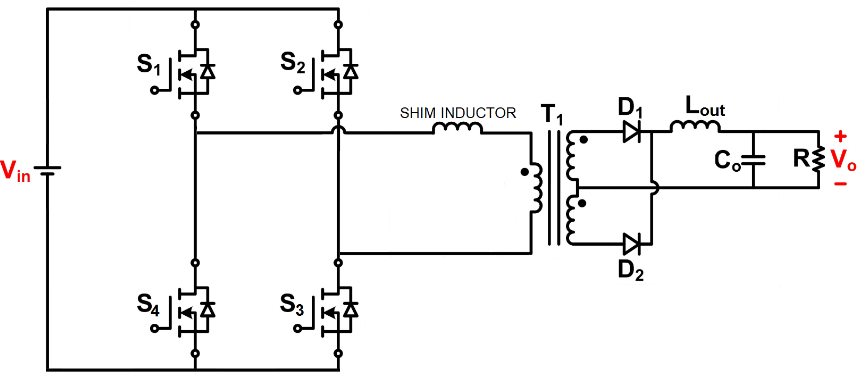
In these topologies, it is often needed an input “SHIM inductor” to achieve the phase-shift function. PREMO suggests smart magnetic solutions without any additional SHIM inductor component. The leakage inductance of the transformer can be used to implement the necessary input serial inductance.
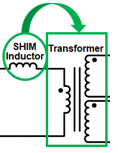
However, that must be managed carefully because the leakage inductance is a “parasitic” parameter naturally intrinsic in the transformer. This value depends mainly on the winding structure. Physically, we can say that this is the result of a poor coupling between primary and secondary windings. The method consists of considering different winding structures.
Thanks to a finite element analysis software – like Maxwell – electromagnetic simulations can be performed to investigate different winding structures for a specific leakage inductance. This will provide the required input inductance value without adding a choke.
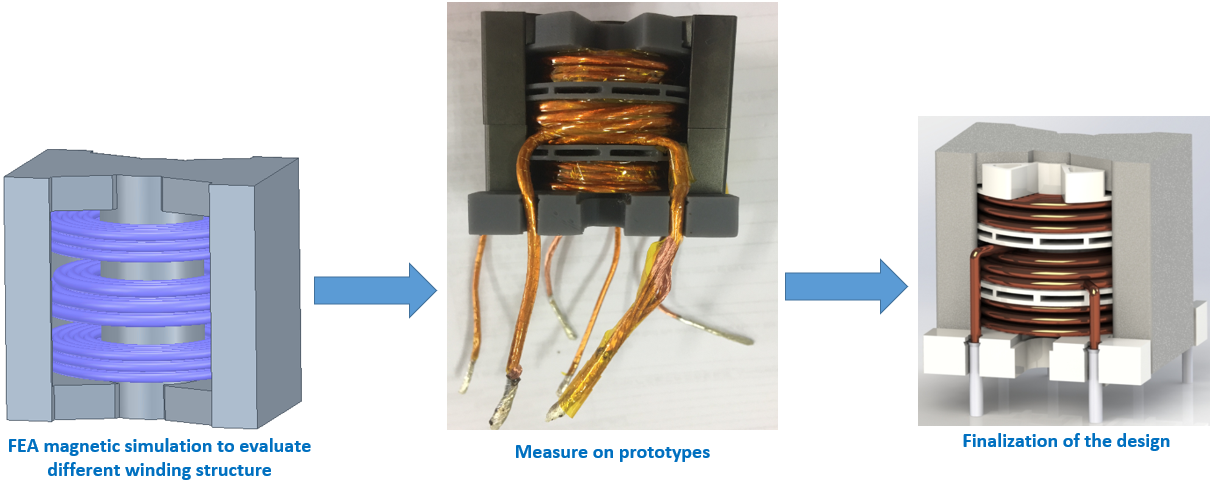
OBC: LLC topology
LLC topology is more suitable for OBC applications (400V to 400V) since the output voltage should be adapted according to battery charging voltage range (270V to 470V). The resonant cell allows the level of voltage to be adjusted by the switching frequency.
Efficiencies up to 98% can be achieved with LLC resonant converters when integrated magnetics are used. Resonant converters have been around for a long time. However, power electronics for automotive HEV/EV is boosting demand as there is an absolute need to improve efficiency.
The typical structure of a resonant converter LLC topology is shown below:
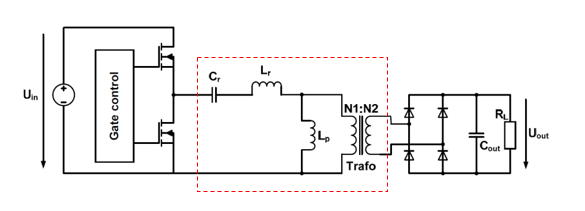
The resonant tank consists of Lr, Cr and Lp. The magnetizing inductance of the transformer itself can be used to create the Lp function of the resonant cell. Thanks to the resonant tank filter, the voltage is naturally adapted by adjusting the switching frequency, so the total losses of the converter are limited compared to a pure PWM structure.
PREMO offers combined magnetics solutions which integrate the resonant choke Lr, the parallel inductor Lp and the transformer.
For example, an integrated magnetics solution can include 2 transformers and the resonant series inductor Lr split into 2 identical symmetrical parts at the beginning and the end of each primary winding. Figure 8 shows a real example with 2 x 11kW transformers with 2×7.5µH Lr chokes.
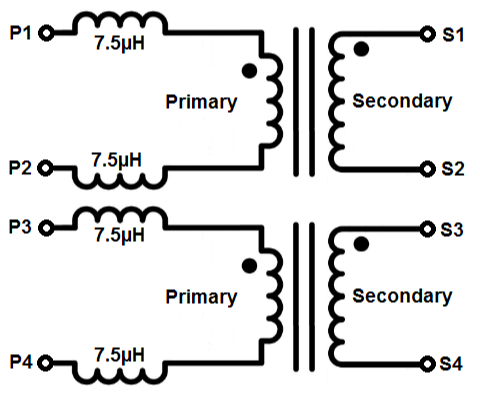
Integrated Magnetics use the common magnetic circuit of a transformer, a series resonant choke and the flux cancellation to increase power density and save cores.
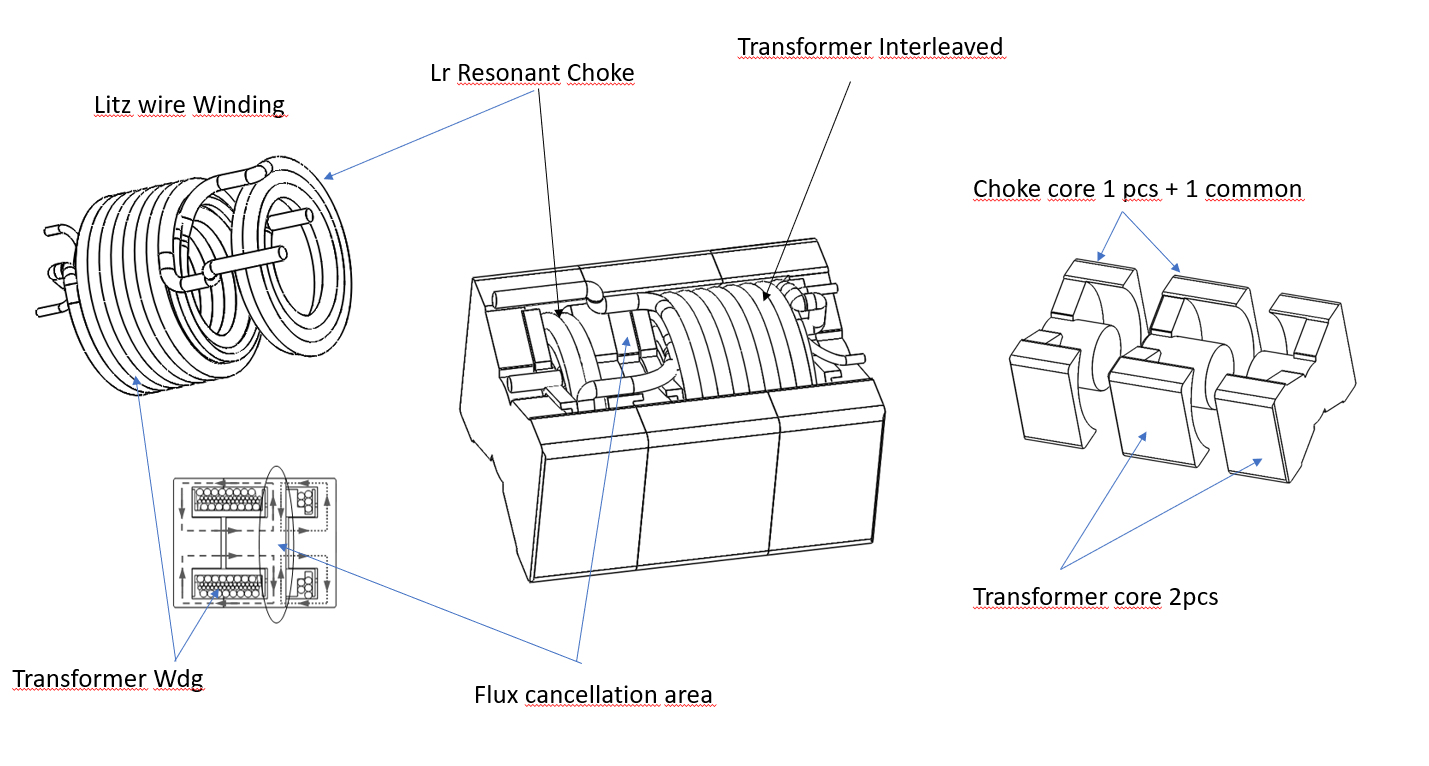
Figure 9: Sharing of a core in a combined magnetic component Lr + transformer
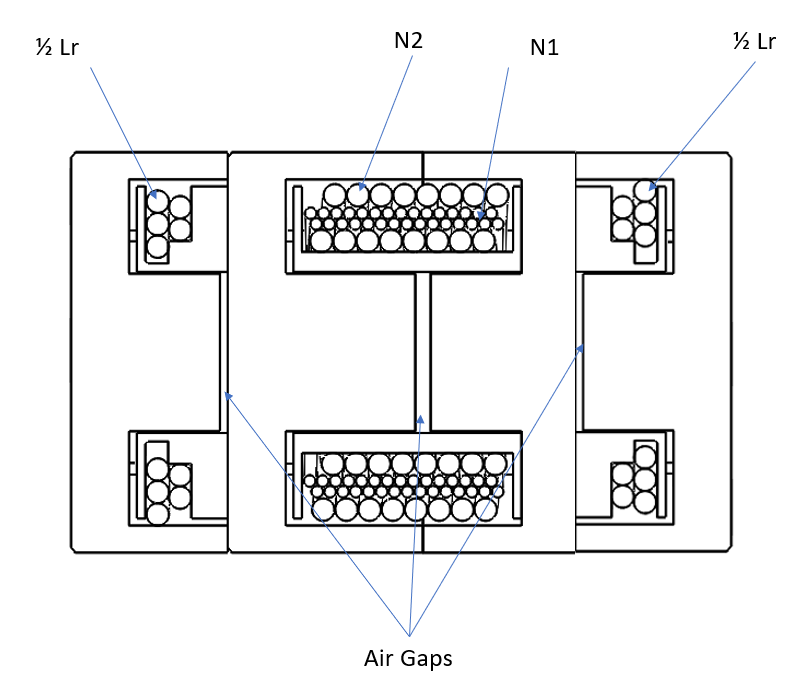
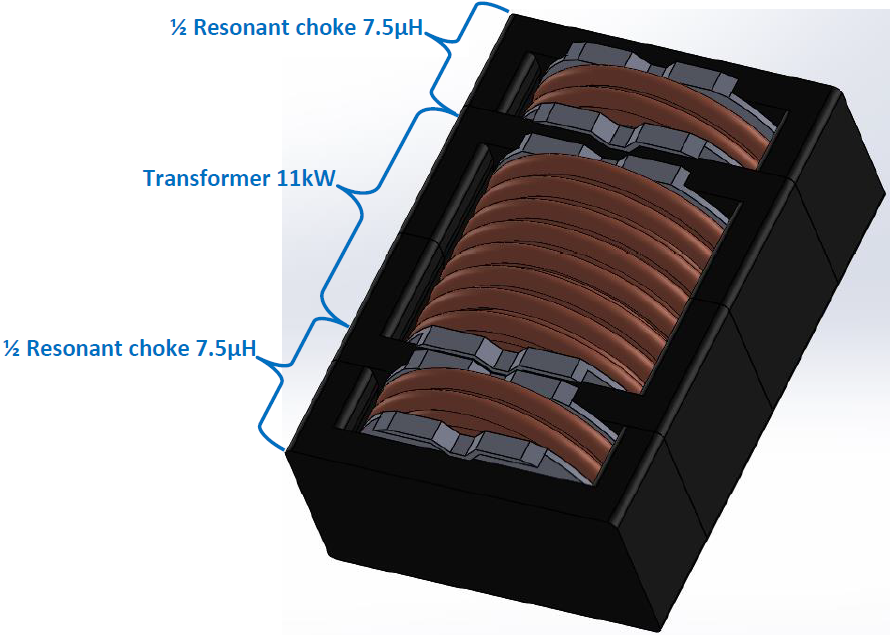
As the power demand increases and EMI issues become more critical, the advantages of resonant converters with integrated magnetics are their soft switching of transistors that provide a higher operating frequency and open the door to GaN-transistors based sinusoidal power processing.
Download the Technical article -> EETimes Europe Article November 2018
PREMO HUB
you might also be interested in......
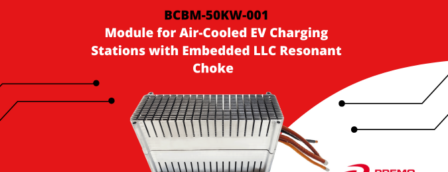
At the heart of Premo’s innovation lies a compact 50KW Off Board Charger Transformer with LLC Resonant Choke set meticulously engineered to meet the demanding power requirements of modern EVs. Housed within a sleek 300 x 174 x 100 mm aluminum casing, this high-performance transformer boasts remarkable efficiency, delivering power with over …
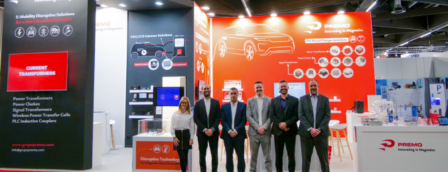
Missed us at PCIM Europe? No worries, we’ve got you covered! Our team showcased the best of our cutting-edge E-Mobility Solutions. Off-Board Magnetics Innovative off-board magnetic for street charging stations and in-home wall-boxes. Transformers and inductors modules are ready to be mounted mechanically, connected, and cooled down, especially by air convection. …
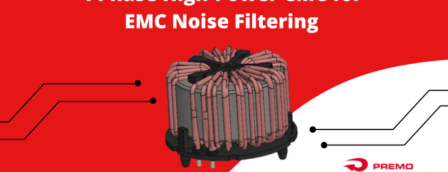
PREMO releases its newest products, the 4CMCN065R0-16H, and 4CMCN065R0-32H, 4-Phases high-power common-mode chokes designed for EMC noise filtering in on-board chargers of up to 22Kw in electric vehicles. These automotive-grade chokes are compact in size (< 5.8 cm3) and got high efficiency (>98.5%), making them the ideal solution for electric vehicle manufacturers …


